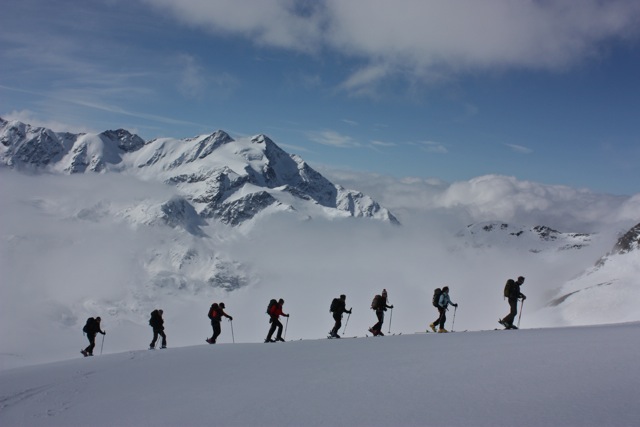
According to a recent study released by Wilderness & Environmental Medicine, traveling solo or in pairs in the backcountry decreases your chances of being caught in a snow slide. The study’s findings contradict the common advice given to never travel alone in the backcountry because having more people increases your chances of survival if something happens. The researchers used Swiss and Italian backcountry statistics to compare group size with avalanche injuries and fatalities. Despite the fact that traveling in large groups is less common, they are more likely to be caught in an avalanche.
“Although the most common group size was two in both the usage and the accident datasets, larger groups had relatively more accidents. The highest risk was found for groups of six or more people in both the Swiss and Italian datasets. For example, while groups of six or more people made up only 10 percent of all groups, they accounted for 23 percent of all accidents,” according to a synopsis of the study.

The study cited that a larger group increases the risk of being caught in an avalanche because:
- A large group creates a higher load on the snow cover
- When there’s more travelers on the snowpack, there’s an increased probability one of them will hit a weak spot in the snow and trigger a slide
- The slower decision-making process of groups has the ability to increase the risk of being caught in a snow slide
- Communication is more difficult when there is more people
- With a large group, there is a possibility that the group will create a false sense of security for individuals

The study also noted that Colorado has seen an increase in avalanche deaths among snowmobilers and snowboarders as the interest in those sports has climbed. Snowmobiling accounted for 23% of all backcountry deaths, which has increased about 7% every decade over the past 60 years. Snowboarding backcountry deaths has increased about 2% per decade, with 86% of those deaths being men. The mean age of avalanche victims was 29, plus or minus about six years. Across the U.S. this year there have been 25 avalanche fatalities so far, up from 11 last year, according to the Colorado Avalanche Information Center.

While backcountry usage has increased, so has education and preparation among its users, which is keeping the avalanche deaths to a minimum. Of the 149 winter backcountry users surveyed in Utah’s Wasatch Mountains and Wyoming’s Tetons for a 2014 study, 77 percent carried basic avalanche safety equipment like a transceiver, shovel and probe, according to a September Study published in “Wilderness & Environmental Medicine.” Next time you’re venturing out in the backcountry, consider traveling by yourself or with a partner to decrease the likelihood of being caught in a snow slide.
Not sure that anyone should be encouraged to “consider traveling by yourself” in the back country regardless of statistics. The actual paper is interesting no doubt, and soling might be something for the experienced and high-risk tolerant to consider. But it says nothing about how many were saved…or not, by a partner. I guarantee that if no one is there to dig you out… you ain’t getting dug out (DUH). Hard to believe that I’m seeing this actually with the skyrocketing number of avalanche deaths this year compared to past. Instead Safety and caution should be continued to be encouraged as you have in the past, especially in a public forum. There are a lot of fools out there that might misinterpret the data (thus the 200%+ increase in reported fatalities per CAIC). Love the work you guys are doing by the way, keep it up!
It would be interesting to overlay these stats with the experience levels of the victims- I would imagine that often the people travelling solo would have greater skills and experience than those travelling in larger groups.